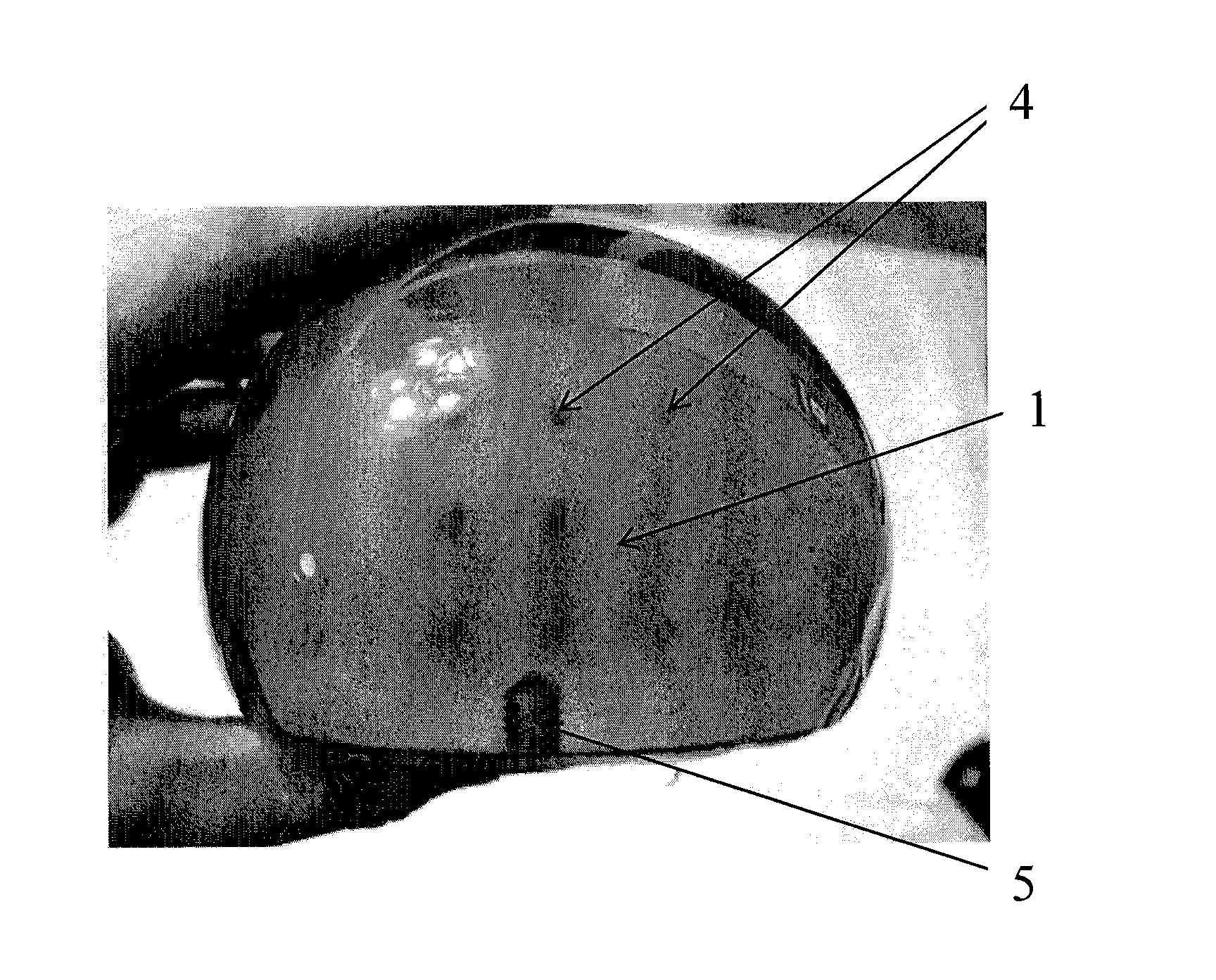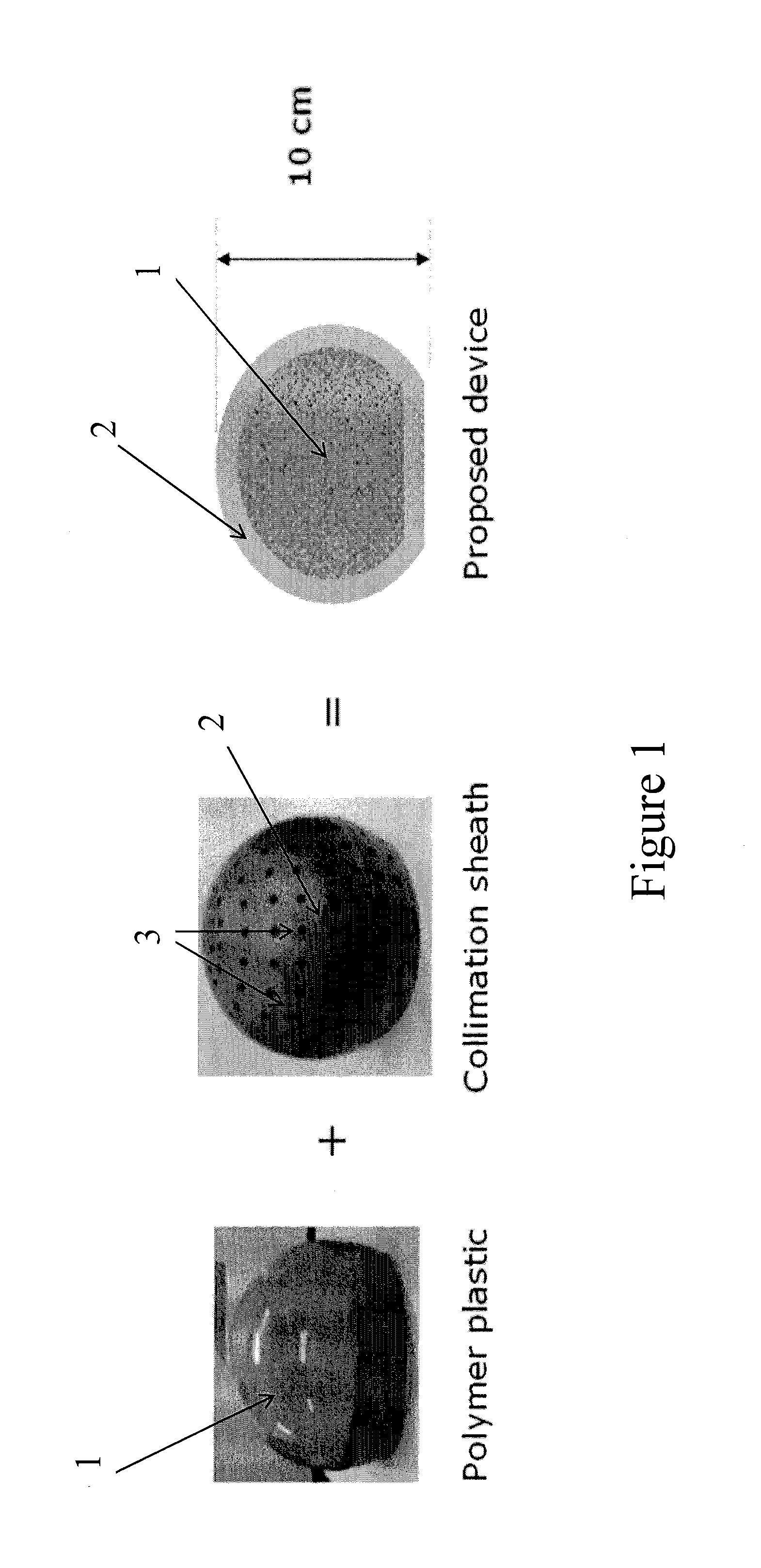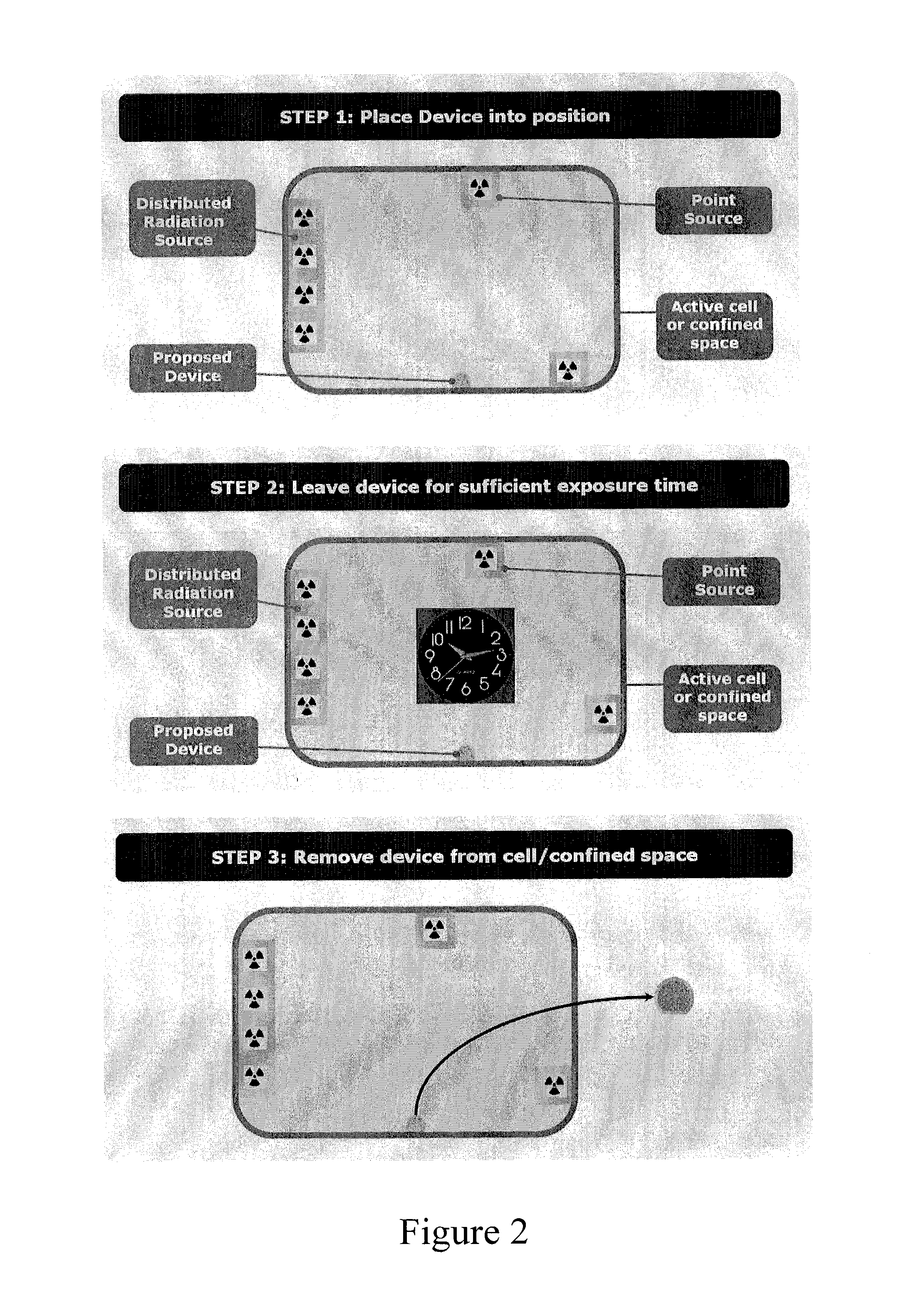Radiation detector
a radiation detector and detector technology, applied in the field of radiation detectors, can solve the problems of affecting the detection accuracy of radiological hazards, the gradual blurring of radiation dose patterns, and the loss of spatial resolution, and the techniques of the prior art suffer, and many systems, and particularly those associated with radiation therapy applications, demonstrate an inability to perform in high radiation background
- Summary
- Abstract
- Description
- Claims
- Application Information
AI Technical Summary
Benefits of technology
Problems solved by technology
Method used
Image
Examples
Embodiment Construction
[0030]The device of the present invention is based on a polymeric core material comprising at least one radiation sensitive material which is located within an external shall material comprising a collimation sheath. The device and method of the invention facilitate the detection and mapping of radiation, and find particular use in mapping the location, intensity and identity of radiological hazards in 3 dimensions in sites such as active cells, gloveboxes, other active plants and confined spaces.
[0031]The device typically has a truncated spherical shape and a diameter in the region of 5-20 cm, most conveniently around 10 cm. A basic spherical shape has been shown to provide the most satisfactory and efficient embodiment of the invention, and the truncated spherical shape has the advantage that it allows for the device, in operation, to be placed on a flat surface. In the event that the device is to be suspended in space, a perfect spherical shape may, of course, be employed. For an...
PUM
| Property | Measurement | Unit |
|---|---|---|
| diameter | aaaaa | aaaaa |
| thickness | aaaaa | aaaaa |
| cross-sectional area | aaaaa | aaaaa |
Abstract
Description
Claims
Application Information
 Login to View More
Login to View More - R&D
- Intellectual Property
- Life Sciences
- Materials
- Tech Scout
- Unparalleled Data Quality
- Higher Quality Content
- 60% Fewer Hallucinations
Browse by: Latest US Patents, China's latest patents, Technical Efficacy Thesaurus, Application Domain, Technology Topic, Popular Technical Reports.
© 2025 PatSnap. All rights reserved.Legal|Privacy policy|Modern Slavery Act Transparency Statement|Sitemap|About US| Contact US: help@patsnap.com



